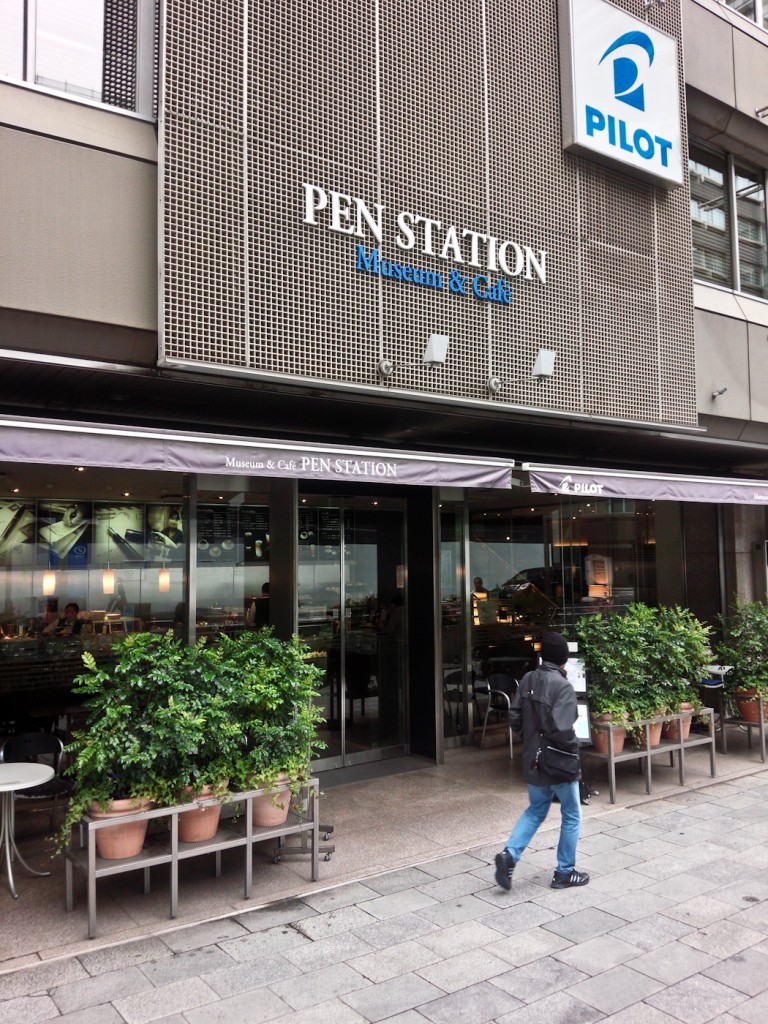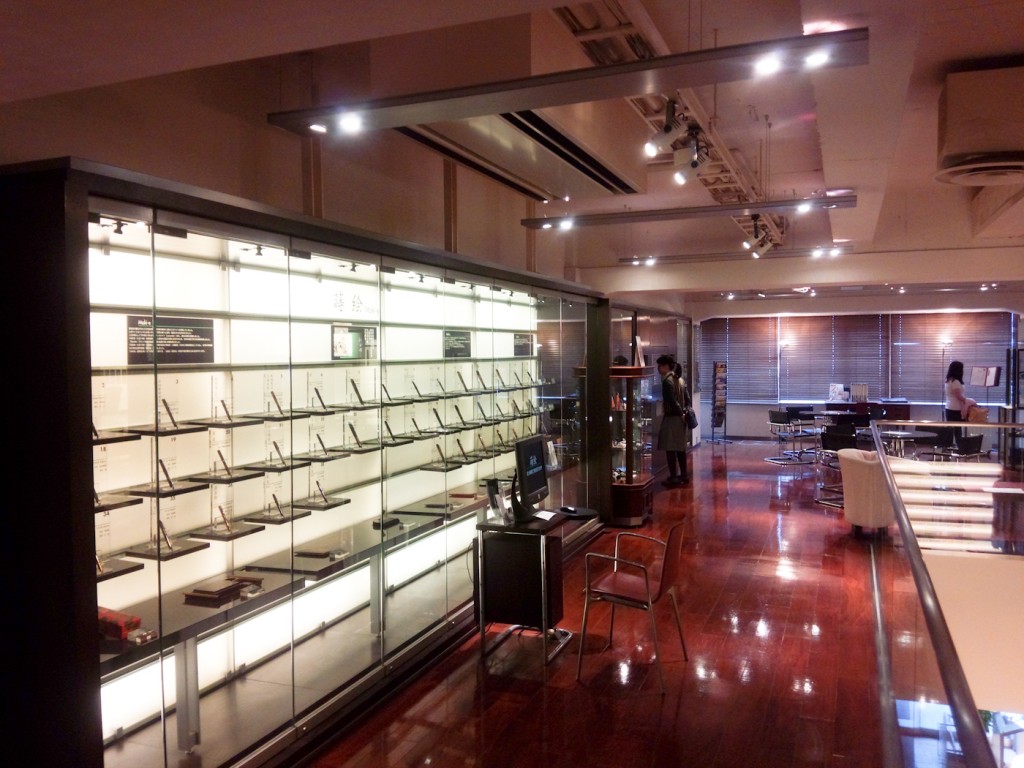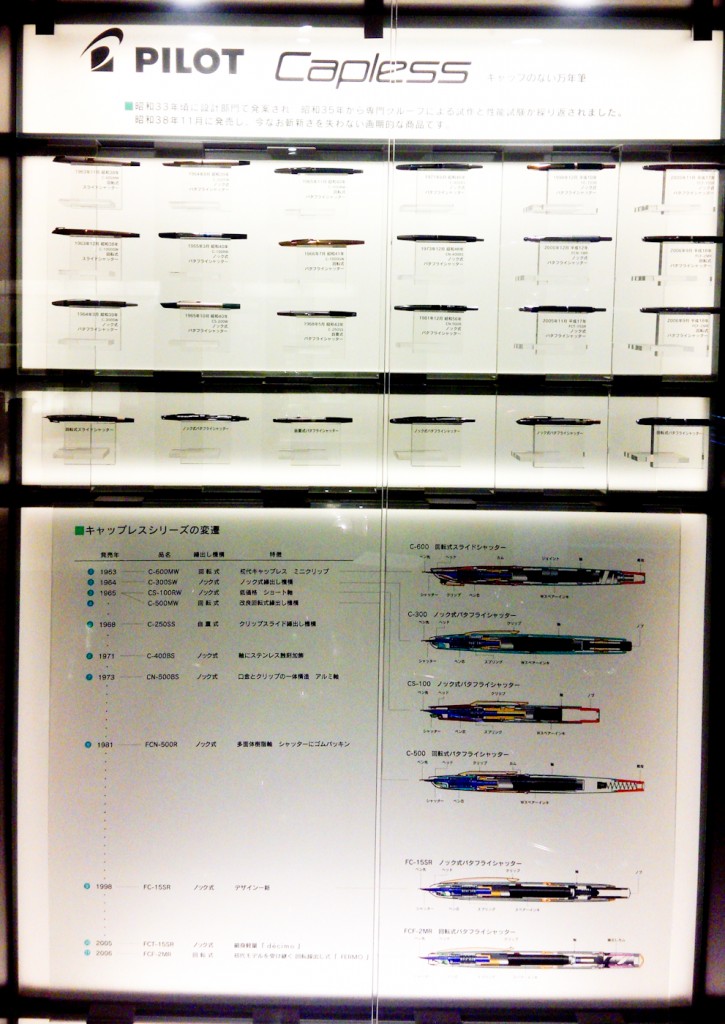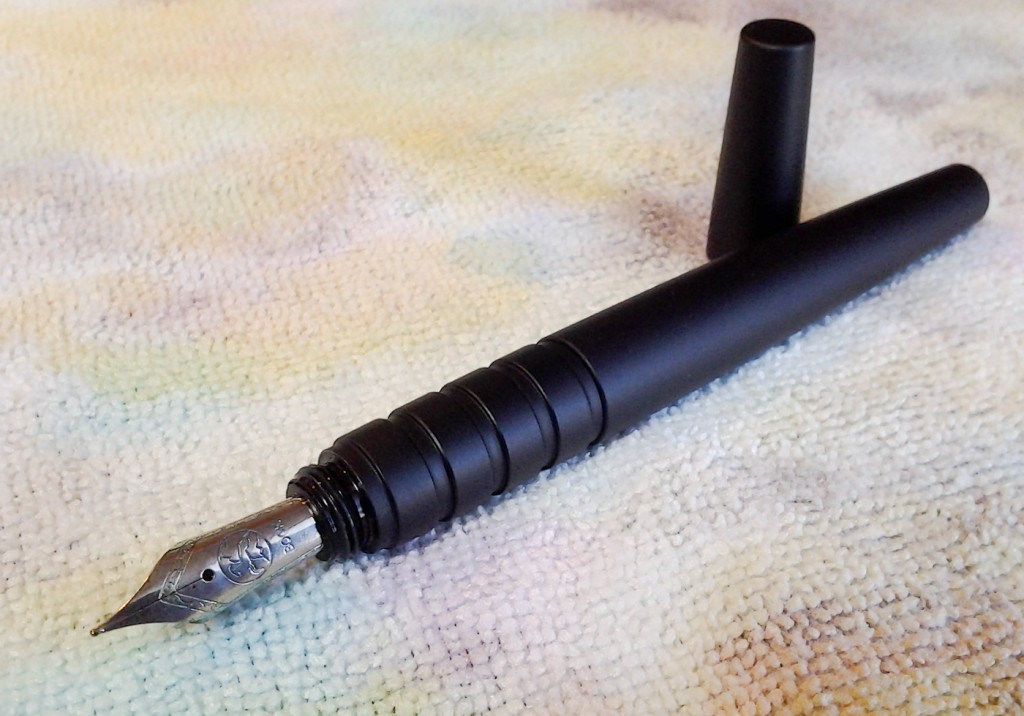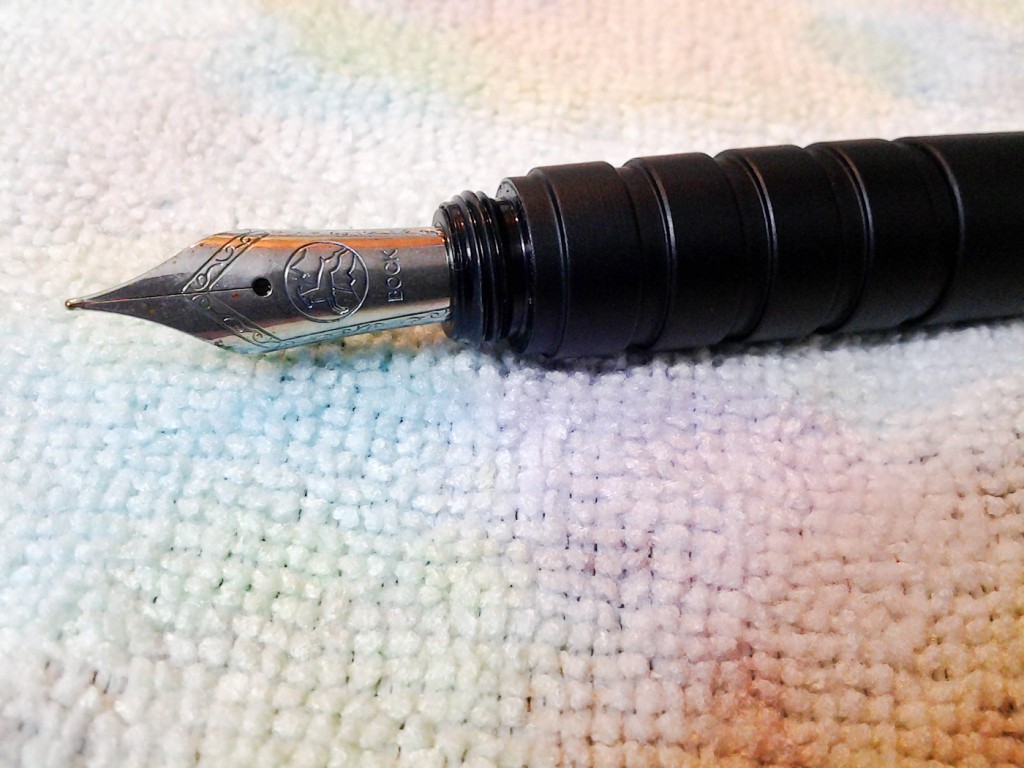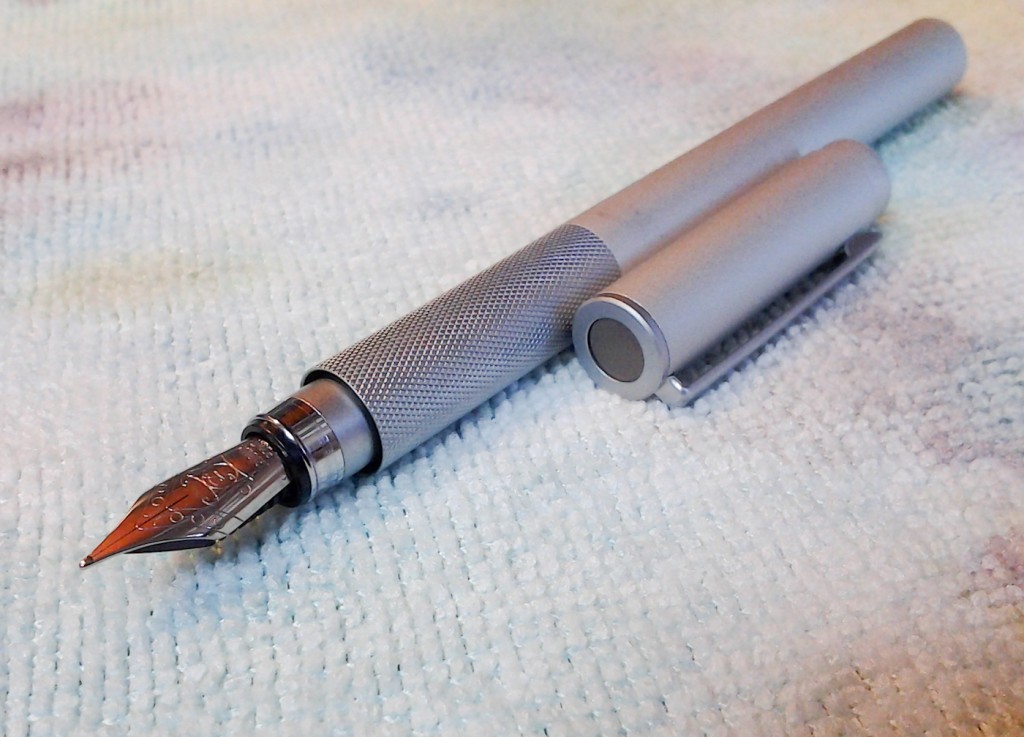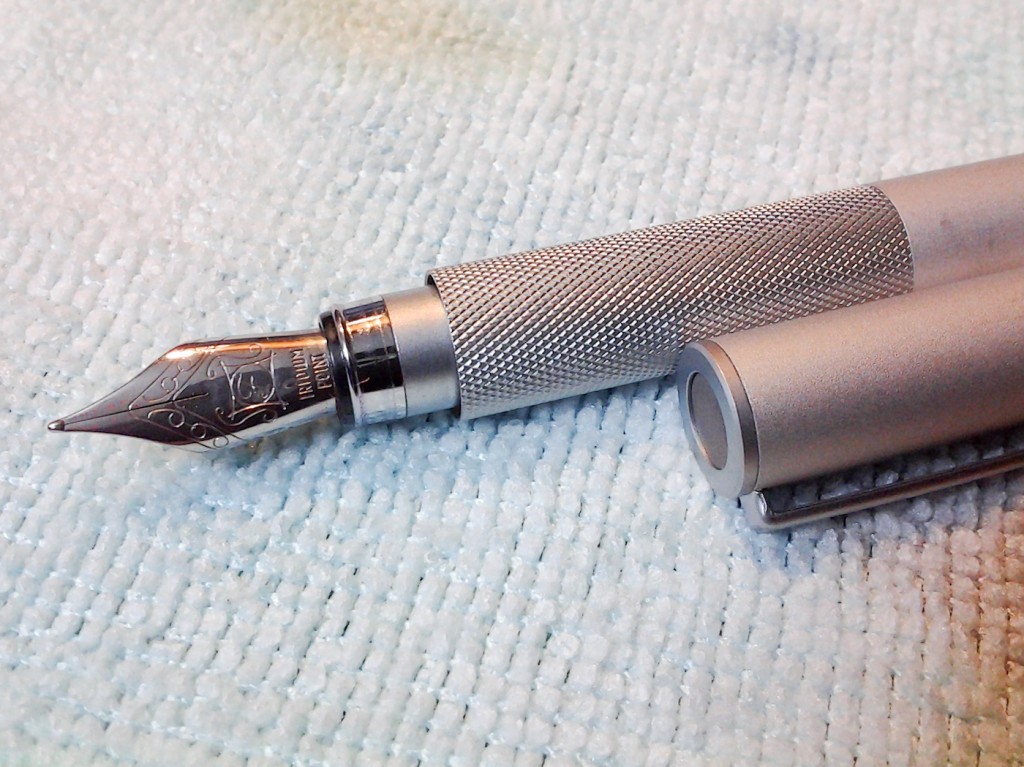The trouble started in the basement. It got better upstairs. The third floor was just bizarre and kind of sad.
Today I visited the 7th Annual World Fountain Pen Exhibition (link in Japanese) at Maruzen Books in Tokyo. I came away realizing I’d actually visited two and a half pen shows: one that was fun and full of people who seemed to be having fun and one that was dark and full of people who seemed to have sticks up their, um, spines.
Then there was the guy on the third floor. He deserved better.
I’ve mentioned before how part of the problem with Tokyo’s major pen shows is that they are run by the stores hosting them for the benefit of the stores. This makes them rather stodgy. Today they got annoying.
Maruzen, inexplicably, squeezes the pen exhibition onto three different floors rather than clearing space for one. In the basement you have an expanded version of their normal pen section and most of the displays are run by Maruzen staff rather than pen enthusiasts or pen manufacturers. There are pens and there is ink. There is nothing else. Sort of. (More on that in a moment.)
Today the most interesting section in the basement was the surprisingly well stocked OMAS table. It had a warning that OMAS was belly up, and a wide selection of different types of pens all in the “yeah, I could probably flip these for more than that” range.
For this post, I took a couple pictures of the show in general and was immediately accosted from behind–by a woman from the Montblanc booth no less–and told no pictures. I responded with a very mature rant (in English) about how they were contributing to the death of pens and handwriting, but since they weren’t makers–and probably didn’t speak much English–the only impression I made was “jerk foreigner who finally shut up and left”.
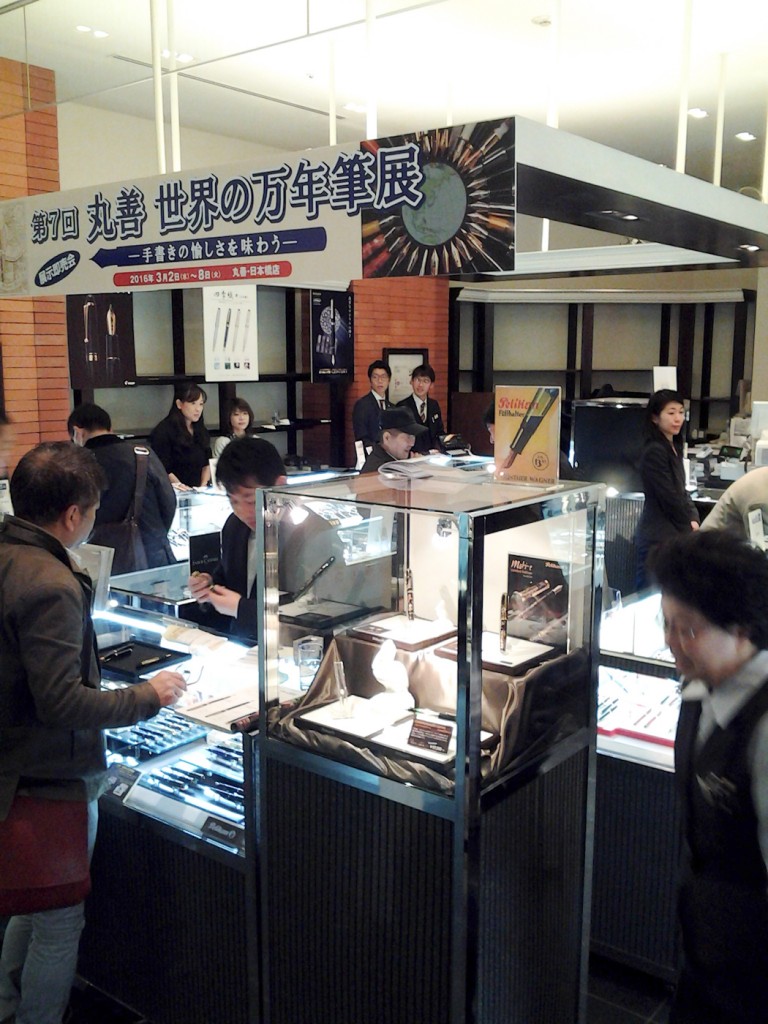
A scene from one corner of the pen show. The Montblanc lady (not pictured) yelled at me right after this was taken.
I immediately vowed not to buy anything, but in a dark corner (no joke, by the way) on the way to escalator I ran across a notebook maker I’d never heard of and had to buy a couple notebooks. (I never change, except in my resolve.) (More on those notebooks in a another post.)
Upstairs, on the ground floor, was the second pen show. It featured the pen makers Nakaya, Ohashido and Eboya. Despite being squeezed in near the umbrellas and watches, everyone in that pen show was having fun. Not only was the space brightly lit, it was full of pen enthusiasts and the makers actually invited you to their tables and were happy to show off their wares without the looks of suspicion given by the clerks in the basement.
The man from Eboya at least pretended to have heard of Newton Pens when I compared my Moody to his pens. He also liked my Edison Glenmont and showed he had a pen made from Cumberland ebonite as well.
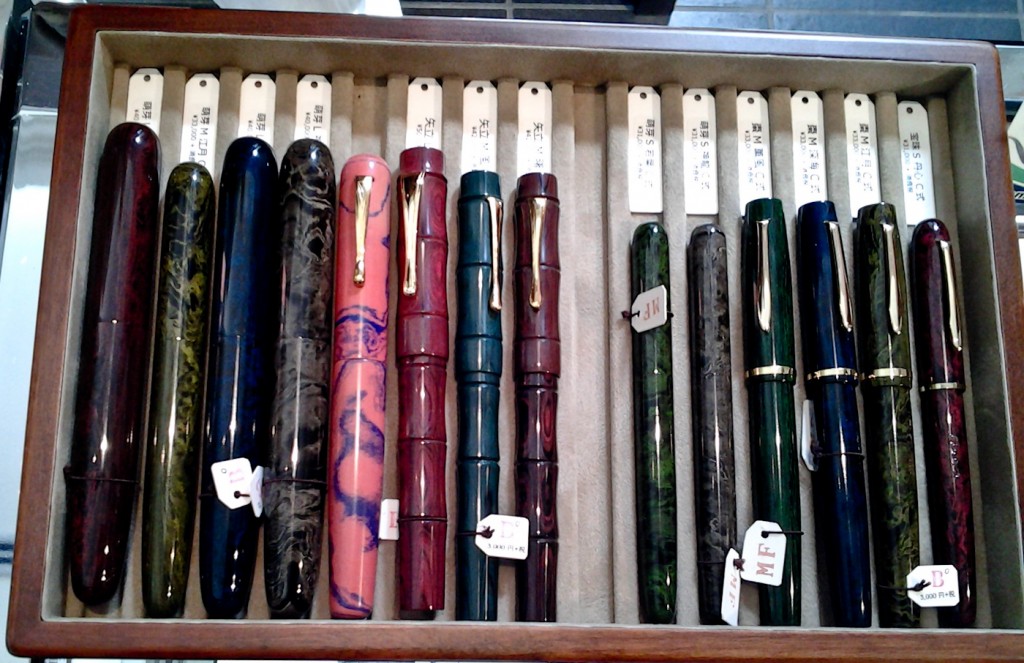
The Eboya display–my Newton Moody is fifth from the left. I want everything on the left (plus the red bamboo.)
The man from Ohashido carefully explained the differences in the two pens that interested me. One had a brushed orange urushi that revealed the black ebonite underneath (and looked awesome) the other was solid orange ebonite. (The pictures didn’t turn out.) Nakaya sat at a table of temptation to fix pens and/or replace nibs whether they’d been purchased at Maruzen or not.
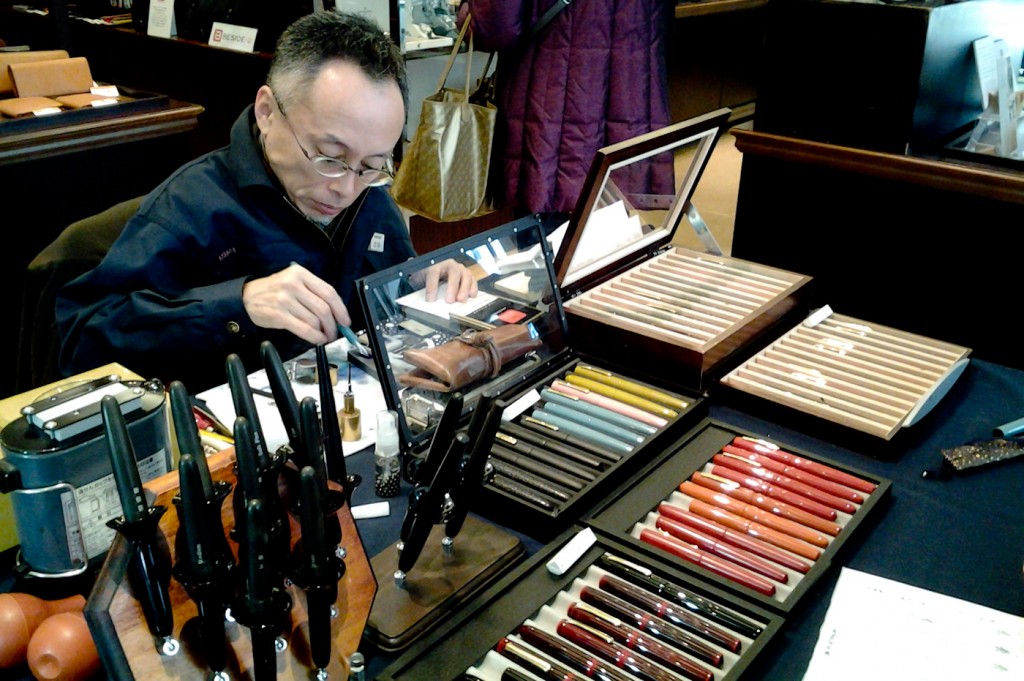
Mr. Yoshida of Nakaya smooths a nib on a stone. The pens down left are all samples and all very, VERY dangerous.
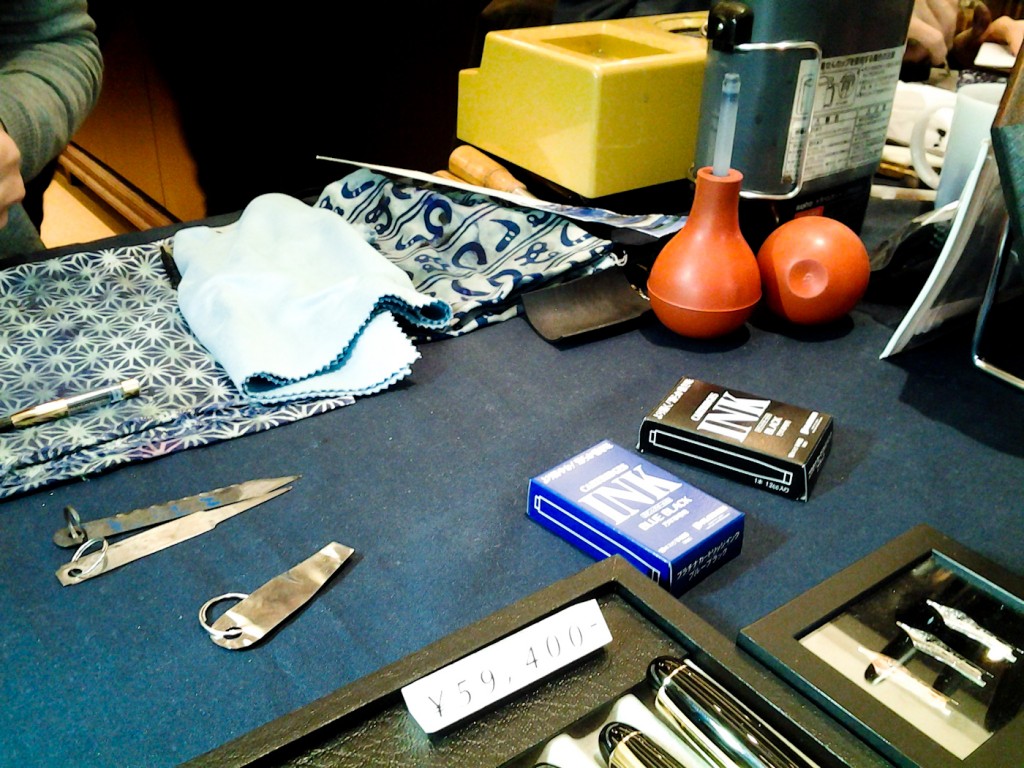
Nakaya’s pen maintenance tools.
On the third floor, I stumbled across a Maki-e demonstration put on by Pilot Pens. The artisan, who’s name was not posted and which I didn’t ask for, had just finished talking about maki-e and demonstrating how to do it. He was all by himself and should have been down on the ground floor where he might have been able to sell some pens or, at minimum, find and audience.
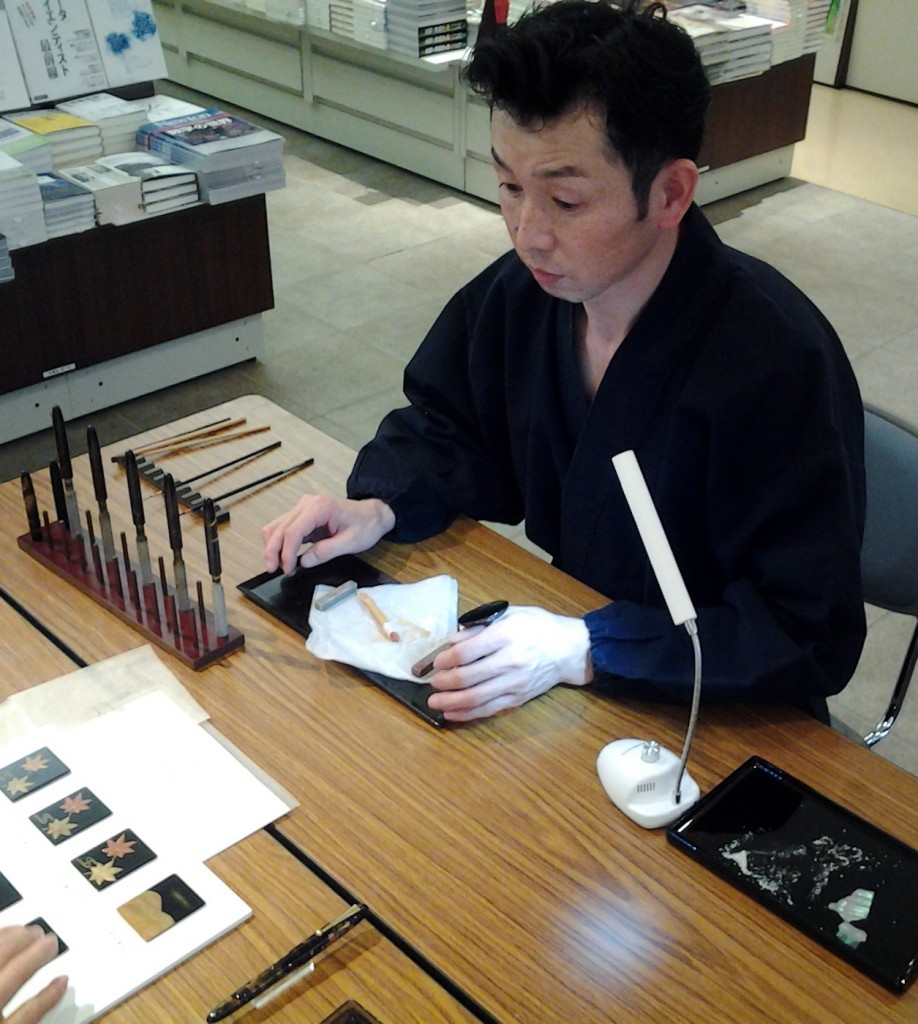
The Pilot Maki-e artist talks to the only other guy there. His Maki-e powder is to the right in the black tray.
Next week I’ll go to the Mitsukoshi Fountain Pen Fair. It’s bigger and all in one place, but it’s still mostly run by clerks. I’ll go on Saturday, which is a busier day, and try to get in line for a custom Sailor ink.
Unfortunately, that’s also the day of the Tokyo Folding Knife show so my loyalties and priorities will be split. (See above comments about resolve.)

